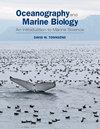Globalisation in marine ecosystems: the story of non-indigenous marine species across European seas
1区 生物学
Q1 Agricultural and Biological Sciences
引用次数: 387
Abstract
The introduction of non-indigenous species (NIS) across the major European seas is a dynamic non-stop process. Up to September 2004, 851 NIS (the majority being zoobenthic organ- isms) have been reported in European marine and brackish waters, the majority during the 1960s and 1970s. The Mediterranean is by far the major recipient of exotic species with an average of one introduction every 4 wk over the past 5 yr. Of the 25 species recorded in 2004, 23 were reported in the Mediterranean and only two in the Baltic. The most updated patterns and trends in the rate, mode of introduction and establishment success of introductions were examined, revealing a process similar to introductions in other parts of the world, but with the uniqueness of migrants through the Suez Canal into the Mediterranean (Lessepsian or Erythrean migration). Shipping appears to be the major vector of introduction (excluding the Lessepsian migration). Aquaculture is also an important vector with target species outnumbered by those introduced unintentionally. More than half of immigrants have been estab- lished in at least one regional sea. However, for a significant part of the introductions both the establishment success and mode of introduction remain unknown. Finally, comparing trends across taxa and seas is not as accurate as could have been wished because there are differences in the spatial and taxonomic effort in the study of NIS. These differences lead to the conclusion that the number of NIS remains an underestimate, calling for continuous updating and systematic research.海洋生态系统的全球化:欧洲海域非本地海洋物种的故事
非本地物种(NIS)在欧洲主要海域的引入是一个动态的不间断的过程。截至2004年9月,在欧洲海洋和咸淡水中报告了851种NIS(大多数是底栖动物器官),其中大多数发生在1960年代和1970年代。到目前为止,地中海是外来物种的主要接收地,在过去5年里,平均每4周引进一个外来物种。在2004年记录的25个物种中,地中海报告了23个,波罗的海只有两个。研究了在引进率、引进模式和成功引进方面的最新模式和趋势,揭示了一个与世界其他地区的引进过程类似的过程,但具有通过苏伊士运河进入地中海的移民的独特性(莱塞普西亚或erythese移民)。航运似乎是主要的引进媒介(不包括莱塞普西亚移民)。水产养殖也是一个重要的病媒,无意引入的目标物种数量超过了目标物种。超过一半的移民在至少一个地区海域定居。然而,对于相当一部分的引进,无论是建立成功还是引进模式都是未知的。最后,由于NIS研究在空间和分类学上的努力存在差异,跨分类群和海洋的趋势比较并不像所希望的那样准确。这些差异导致NIS的数量仍然被低估,需要不断更新和系统研究。
本文章由计算机程序翻译,如有差异,请以英文原文为准。
求助全文
约1分钟内获得全文
求助全文
来源期刊
自引率
0.00%
发文量
0
期刊介绍:
With increasing interest in the field and its relevance in global environmental issues, Oceanography and Marine Biology: An Annual Review provides authoritative reviews that summarize results of recent research in basic areas of marine research, exploring topics of special and topical importance while adding to new areas as they arise

 求助内容:
求助内容: 应助结果提醒方式:
应助结果提醒方式:


